The Third Munich Technology Conference (MTC3) returned to the Technical University of Munich (TUM) yesterday with a quest to evaluate the status of additive manufacturing industrialization.
Despite the gloomy weather, over 1500 attendees are present, including 3D Printing Industry, for the three-day event which seeks to give a “Reality Check” to those adopting additive manufacturing technologies.
A new pre-conference function commenced the MTC3 this year with pitches from 3D printing start-ups as well as an announcement of a Bavarian additive manufacturing cluster. This presently includes the co-hosts of MTC3, Oerlikon and TUM, as well as GE Additive and Linde. Upon this revelation, Professor Thomas Hofmann, Senior Vice President of TUM explained that its aim is to create “the silicon valley of Bavaria.”
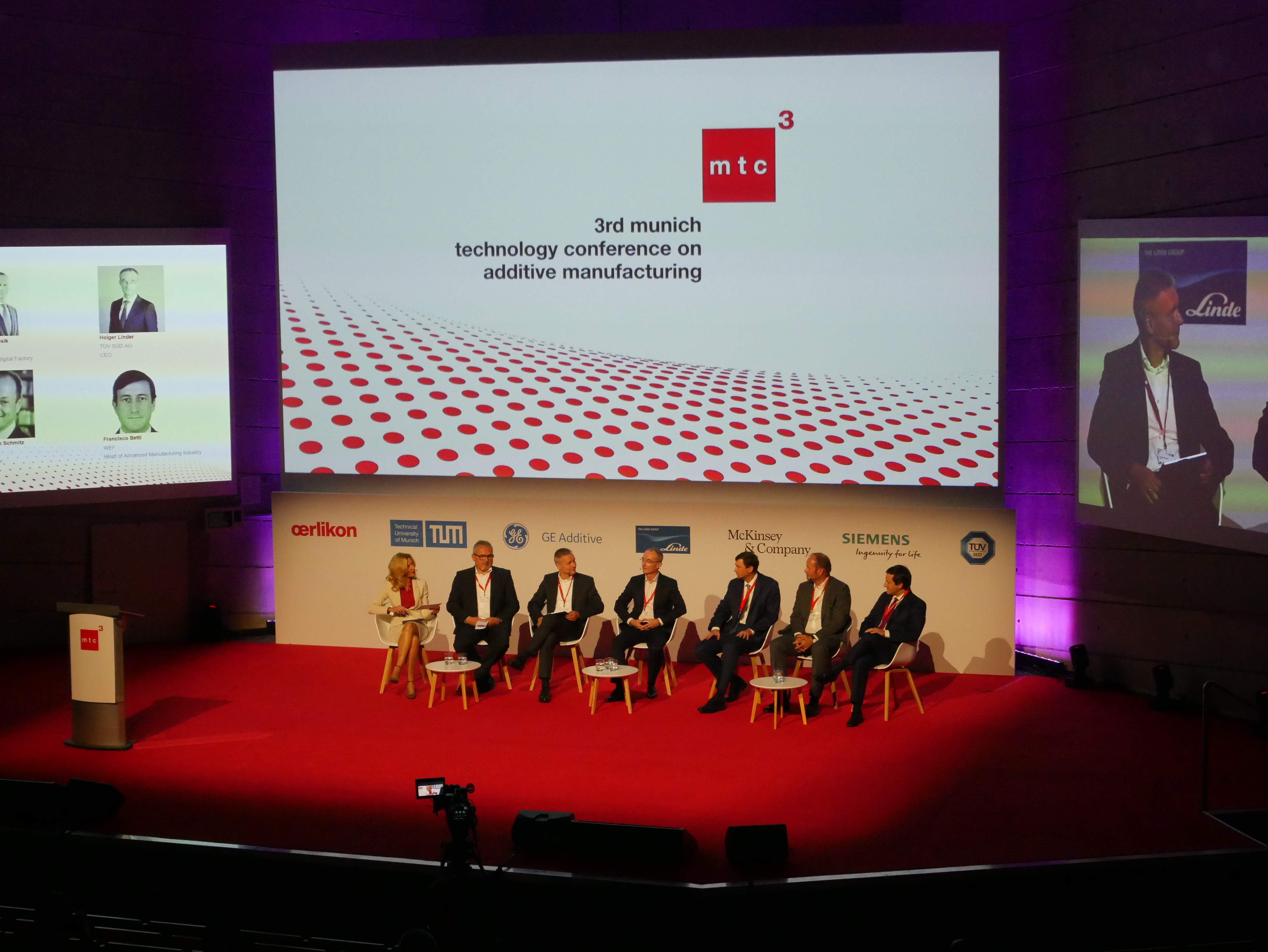
Also setting the tone of MTC3 was Dr. Roland Fischer, CEO of Oerlikon who proposed four categories for the analysis of additive manufacturing. These comprise hardware, software, materials, and applications. While MTC2’s focus on advancing 3D printing materials, this year, there was an emphasis on proven product applications as well as industry collaboration.
“The market is cooling down right now,” stated Dr. Fischer. “The hype is over and its time to step up, hence the cluster, and show what we have done and what we as an industry can do. That is why applications are so important.”
The first of the eight MTC3 conference talks was “Collaboration: The solution to industrialization” which sought to clarify how alliances can broaden the applications for additive manufacturing. The following topics also hearkened back to use cases involving partners from differing sectors for new 3D printed developments.
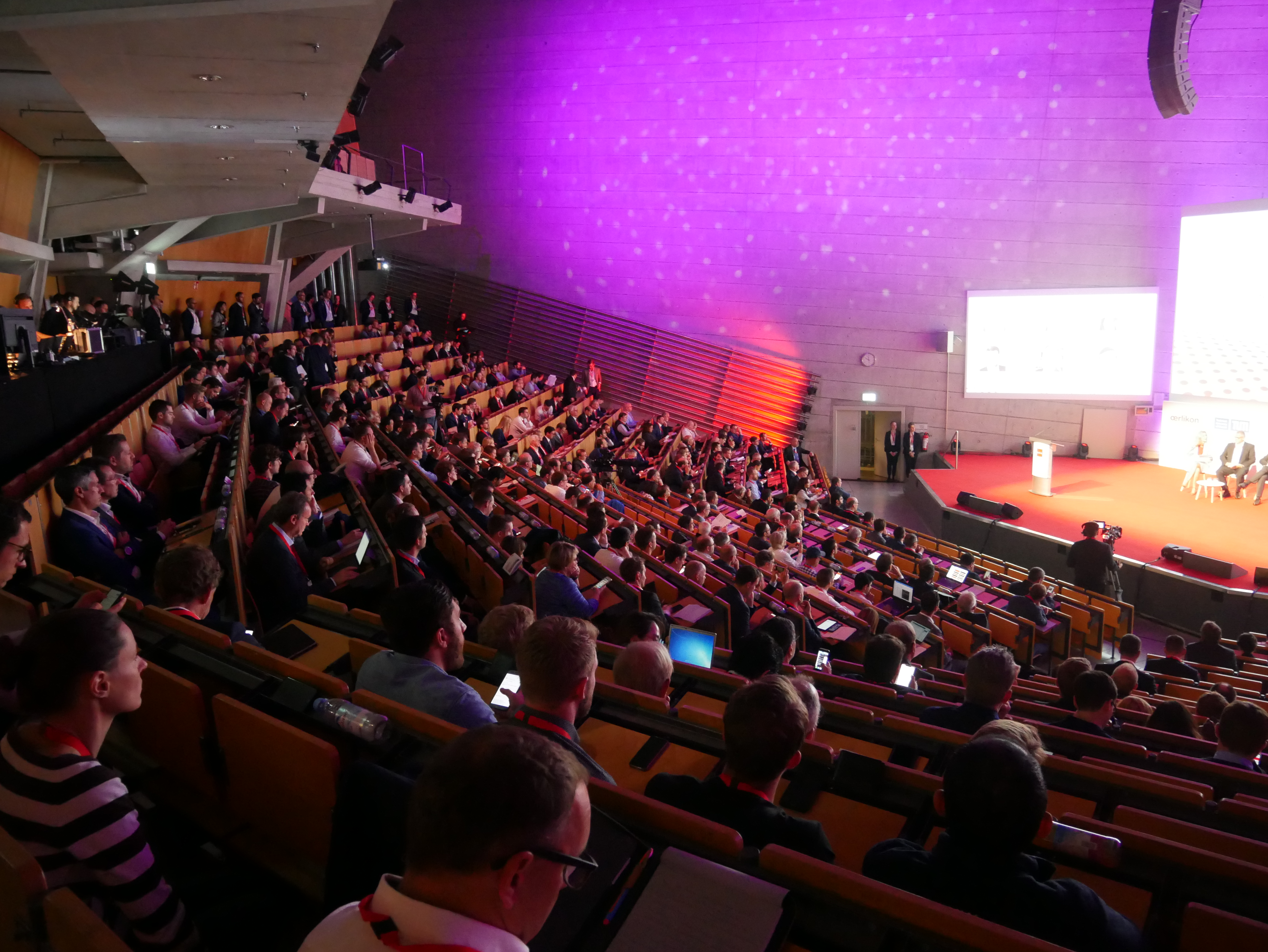
Sitting on the sidelines of additive
Todd Skare, CTO, Linde, explained, “We find willing collaborations from powder producers all the way up to final part makers – but they all seem to be incremental type collaborations. This may be because companies are reticent to really open up or because we don’t have those big ideas.”
“If we really want this technology to take off and become an industrial revolution, we need a target across the whole value chain to be faster, cheaper – and that spreadsheet must show a 20% improvement [in an area] or something that people will jump into as opposed to wonder if they should still sit on the sidelines.”
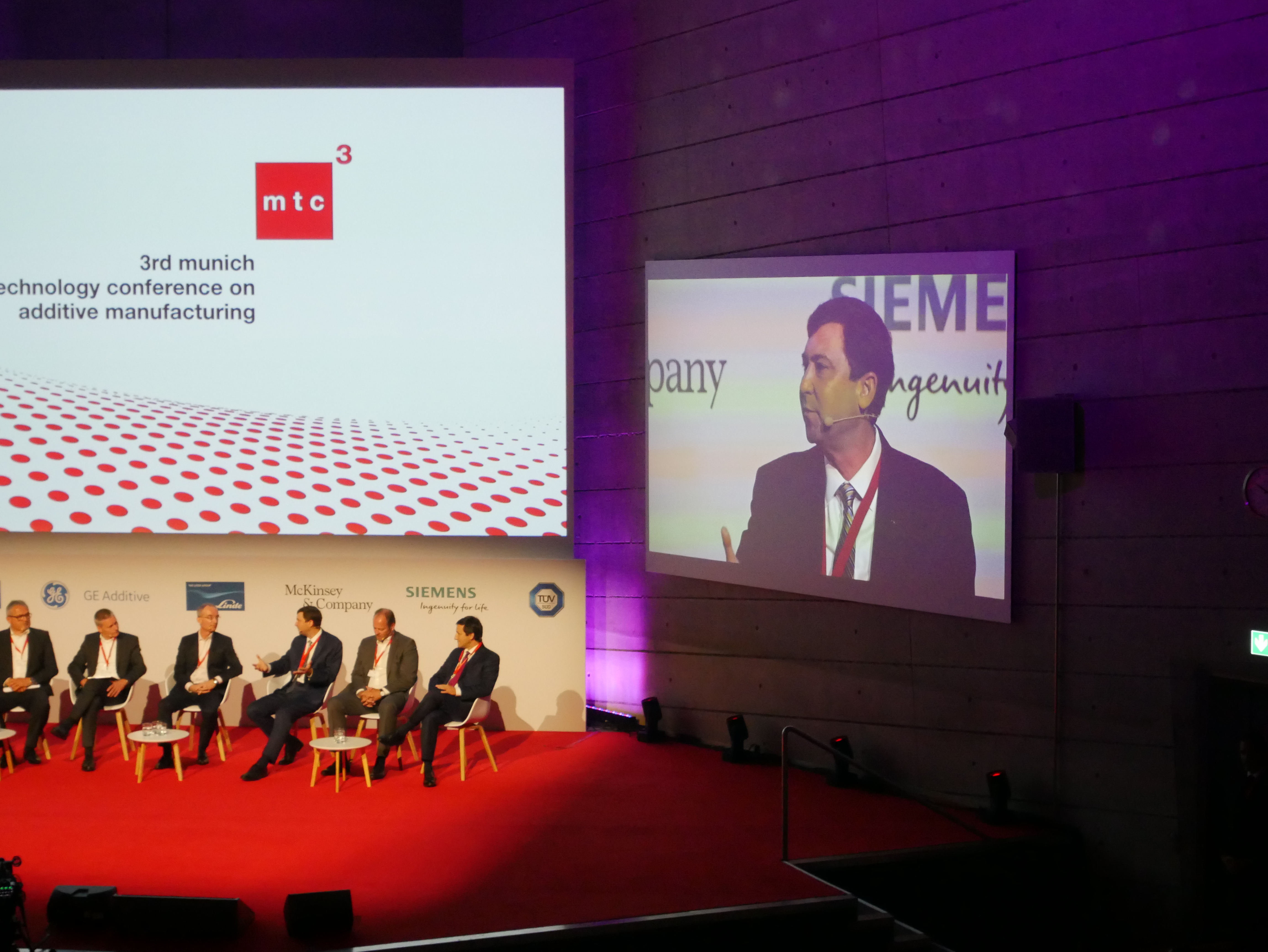
Driving Industries
Aviation was highlighted as one of the “Driving Industries” in the talk following the panel on collaboration. J.D. McFarlan III, VP Functional Engineering at Lockheed Martin Aeronautics, shared how additive manufacturing has been leveraged for aerospace. “We think we were the first company to fly titanium metallic parts additively manufactured on a fighter jet in 2002.”
“We flew some polycarbonate parts on an aircraft in 2006, we also think we’re the first to fly additive parts in space in the form of titanium brackets on the Juno spacecraft. This spacecraft has just got to Jupiter after a 1.7 billion mile trip, so its the longest distance we’ve ever flown an additive part. When additive was not that popular, we were using it.”
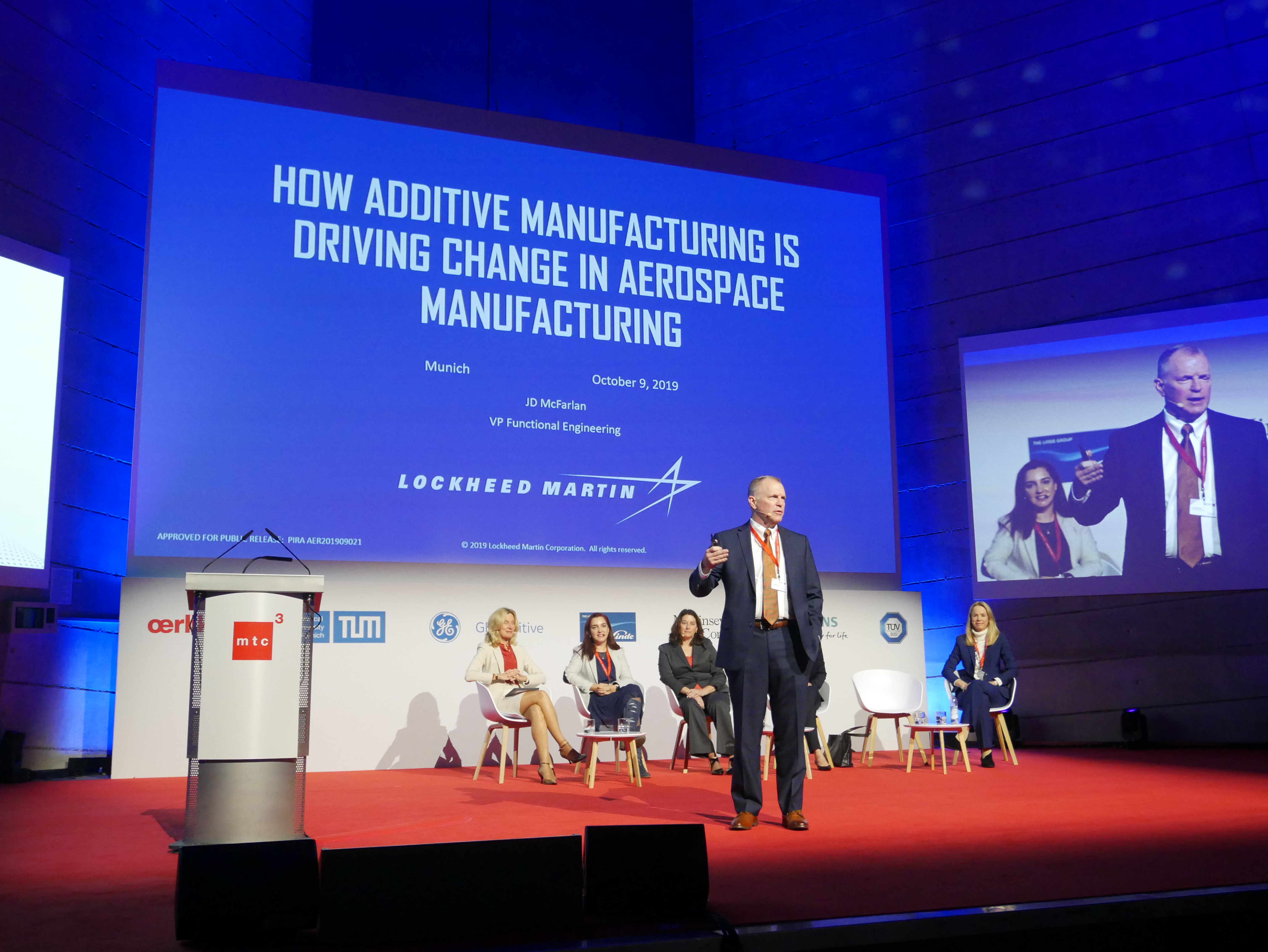
Getting a common framework
Dr.-Ing Christian Seide, Fraunhofer Institute for Foundry, Composite and Processing Technology (IGCV) went on to emphasize the importance of fixed standards and norms needed for industrialization.
“Due to the fact we are currently a niche technology, standards are so important today. Currently, we have a percentage share of the total market of production of around about 0.08% – that’s not a lot. ”
“If we want to see growth we need to advance beyond prototyping and tooling and be more involved in direct manufacturing applications. Use cases can be found in the Pratt & Whitney aircraft engine, which have pushed us forward, but we need more of these examples. I’m convinced good standards can enable and foster scalable cost-efficient additive manufacturing when applied.”
“A good standard implies a high level of international technical consensus. I feel that there is not sufficient knowledge of available standards in our industry. There’s a lot of activity going on in Germany particularly and worldwide, that are working to develop standards (such as TC 261) which will be available next year. This is slowly addressing the problem.”
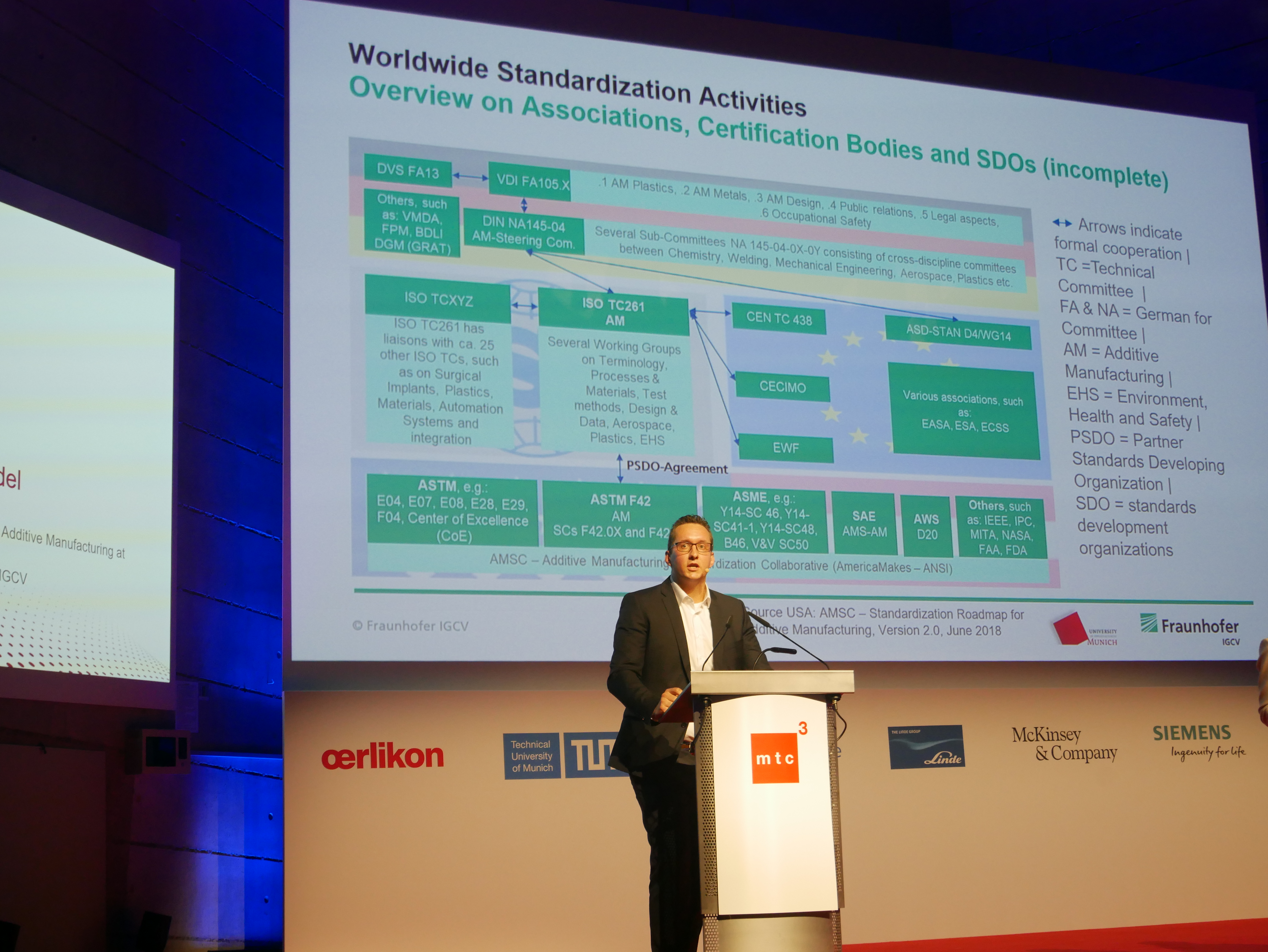
The MTC3 Partners Lounge
Away from the conference talks is MTC3’s Partner Lounge. There, various metal 3D printed parts were on display, showing the capabilities of industrial additive manufacturing. Among the components are UBRacing throttle and brake pedals designed by Oerlikon as well as samples from GEFERTEC and rocket parts from BEAM.
MTC3 has brought forward various concerns for industrializing additive manufacturing. But it is safe to say that the “reality check” has shown that much is being done, whether it be immediate or gradual.
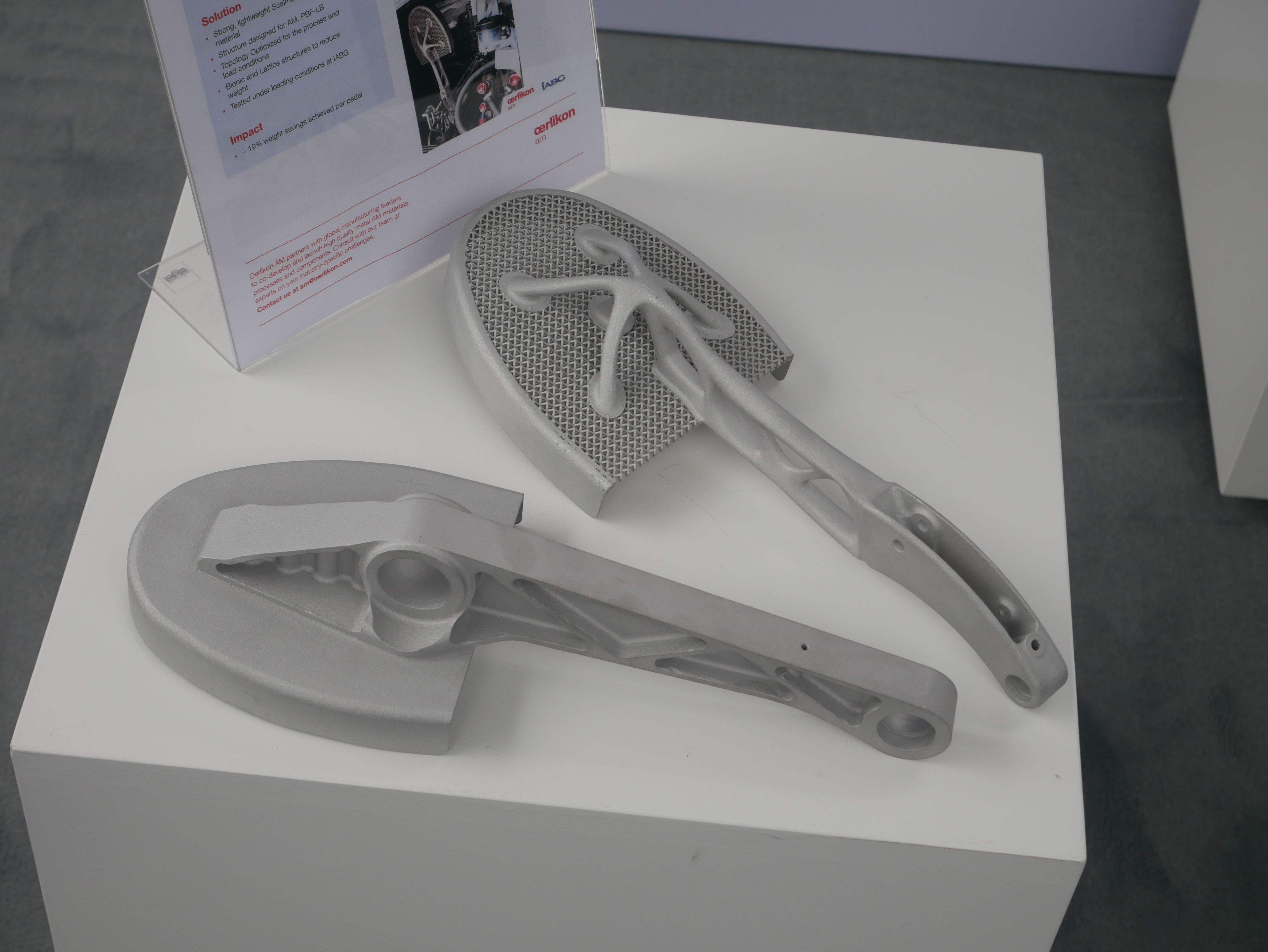
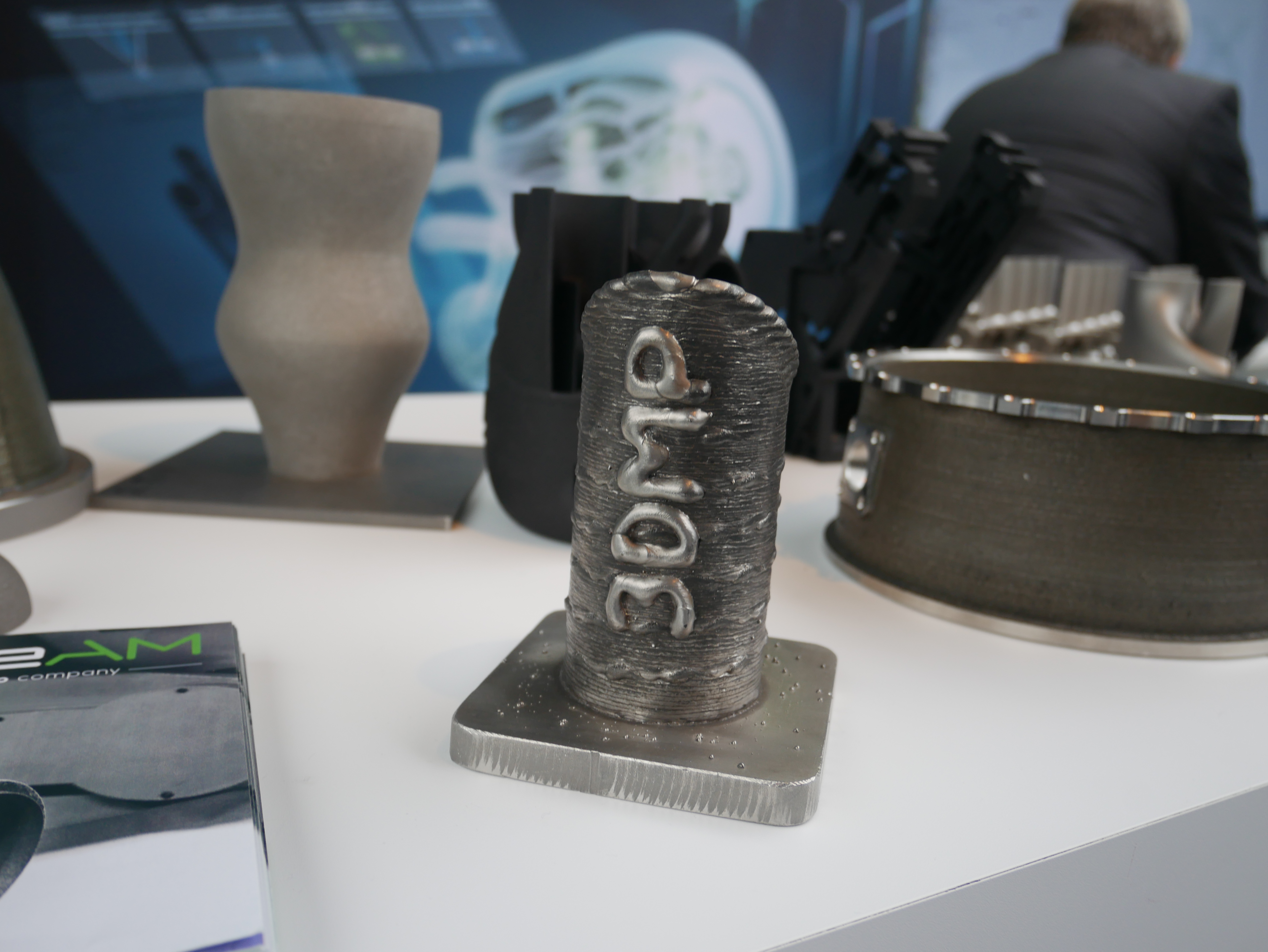
For more on MTC3 subscribe to the free 3D Printing Industry newsletter, follow us on Twitter and like us on Facebook. Looking for a new job or want to hire AM experts? Create a free profile on 3D Printing Jobs, or advertise to find experts in your area.
Featured image shows MTC3 signage. Photo by Tia Vialva.


